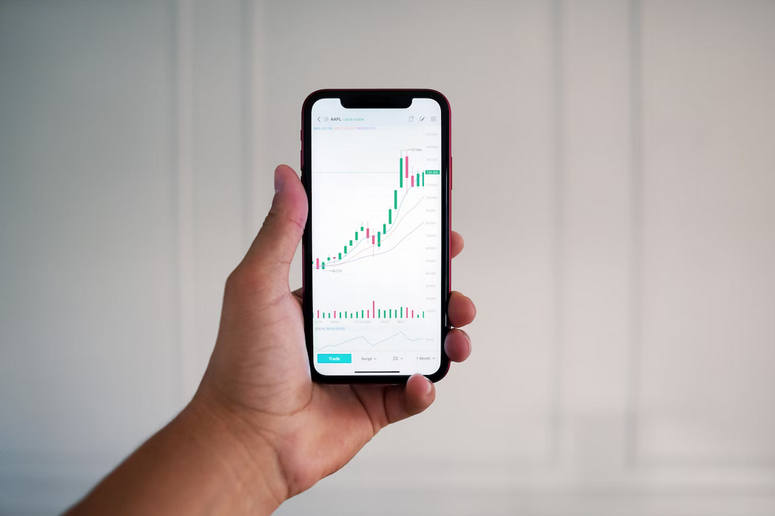Forex trading can be a thrilling yet challenging pursuit. With so many factors influencing currency movements, traders need tools to help them make informed decisions. One of the most effective methods is through candlestick charts. These visual representations not only showcase price movement but also reveal potential market sentiment. Imagine being able to read the story behind each price movement a tale of buyers and sellers competing for dominance in the market. Candlestick patterns serve as this narrative, providing insights that can lead to successful trades. Whether you’re a novice or an experienced trader, understanding these patterns is essential for navigating the forex landscape with confidence.
The History of Candlestick Patterns
Candlestick patterns have a rich history that dates back to 17th century Japan. They were developed by rice traders who needed a way to visualize price movements in the market. This innovative approach allowed them to make more informed decisions based on past performance. The technique was popularized by Munehisa Homma, who is often referred to as the father of candlestick charting. His methods not only focused on price but also incorporated emotions and psychology behind trading. It wasn’t until the late 20th century that these charts gained popularity in Western markets. Traders began recognizing their effectiveness in gauging market trends and reversals.
Why Candlestick Patterns Are Important in Forex Trading

Candlestick patterns are essential tools for Forex traders. They provide a visual representation of price movements, revealing market sentiment at a glance. Each candlestick reflects the open, high, low, and close prices within a specific timeframe. By analyzing these patterns, traders can gain insights into potential reversals or continuations in trends. Understanding candlesticks helps identify key support and resistance levels. This knowledge can guide entry and exit points effectively.
Common Candlestick Patterns and Their Meanings
Candlestick patterns reveal market sentiment and potential price movements. Recognizing these formations can give traders a significant advantage. One of the most common patterns is the Doji. It indicates indecision in the market, where buyers and sellers are in balance. A Doji can signal potential reversals when found at key support or resistance levels. Another popular pattern is the Hammer. This shape appears after a downtrend, suggesting that buying pressure may be increasing. It typically indicates that a bullish reversal could follow.
How to Read and Interpret Candlestick Charts

Reading candlestick charts involves understanding the unique shapes and colors of each candle. Each candle represents a specified time frame, showing four key price points: open, high, low, and close. The body of the candlestick indicates the opening and closing prices. If it’s filled or colored (often red), it shows that the closing price was lower than the opening. A hollow or lighter-colored body reflects a rising market where buyers have taken control. Wicks extend from both ends of the body. They represent price extremes during that period. Longer wicks suggest volatility; shorter ones indicate stability.
Strategies for Using Candlestick Patterns in Trading
To leverage candlestick patterns effectively, traders should combine them with other indicators. This approach enhances the reliability of trading signals. One effective strategy is to look for confirmation. Wait for a subsequent candle to validate the signal indicated by your chosen pattern. For example, if you spot a bullish engulfing pattern, an upward closing candle that follows can affirm your buying decision. Another tactic involves using support and resistance levels in conjunction with candlestick patterns. If a pattern appears near these critical points, it may signal stronger price action ahead.
Tips for Identifying and Trading With Candlestick Patterns
To effectively identify candlestick patterns, start by focusing on the time frame that suits your trading style. Day traders may prefer shorter intervals, while swing traders might opt for daily or weekly charts. Next, look for patterns at key support and resistance levels. These zones often signal potential reversals or continuations in the trend direction. Pay attention to volume as well; increased activity can validate a pattern’s significance. A bullish engulfing candle with high volume is more reliable than one with little participation.
Understanding candlestick patterns can significantly enhance your Forex trading skills. By familiarizing yourself with how these charts work, you gain insights into market sentiment and potential price movements. The history of candlestick patterns adds depth to their value in trading today. Recognizing the importance of these patterns is crucial for any trader looking to navigate the Forex market effectively. Each pattern tells a story about past price action, offering hints on future trends. Armed with this knowledge, traders can make more informed decisions.…






 A good Forex trading platform should be easy and simple to use. Easy enough for those new to them and professional and advanced enough for experienced users. Simply put, this means that a good platform must incorporate tools that are easy to navigate, user-friendly, and feature a proper positioning of all critically important actions, such as signal enabling, etc.
A good Forex trading platform should be easy and simple to use. Easy enough for those new to them and professional and advanced enough for experienced users. Simply put, this means that a good platform must incorporate tools that are easy to navigate, user-friendly, and feature a proper positioning of all critically important actions, such as signal enabling, etc. Lastly, in order to keep up with the latest advancements in computer technologies, a Forex platform must utilize cutting-edge technology. This would substantially improve the mobility, efficiency, and accuracy of all its sub-systems. Additionally, it would enhance convenience for the users, who will be able to use their personal passwords and IDs to safely log in, when switching between various Forex trading platforms.…
Lastly, in order to keep up with the latest advancements in computer technologies, a Forex platform must utilize cutting-edge technology. This would substantially improve the mobility, efficiency, and accuracy of all its sub-systems. Additionally, it would enhance convenience for the users, who will be able to use their personal passwords and IDs to safely log in, when switching between various Forex trading platforms.…